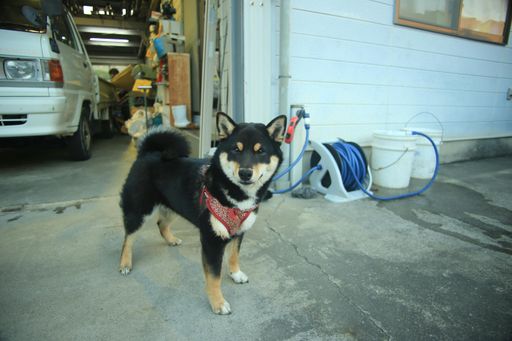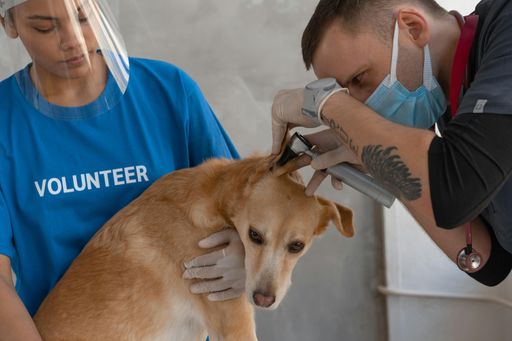One second a dog is peacefully snoozing on the rug, the next they explode into action with wild energy. Eyes wide and slightly unhinged, they're bouncing off furniture, doing victory laps around the coffee table, somehow managing to run sideways while their back end tries to overtake their front end. They might throw in a random play bow to absolutely no one, or suddenly army-crawl under a chair for reasons known only to them.
It’s an all-too-familiar, hilarious scene in day-to-day dog ownership. It even has a fancy scientific name, too: frenetic random activity periods (FRAPs). Most people, however, just call them zoomies, and they're one of the purest expressions of canine joy.
But sometimes laughter caused by these random energy explosions can quickly turn to panic. If homes and play spaces aren’t set up safely, zoomies can cause harm and injury to your dog.
Why Dogs Get the Zoomies
Zoomies are basically a dog's way of announcing, "I have too much energy and I need to burn it off RIGHT NOW!" It’s your dog letting loose pent-up excitement or energy.
The triggers vary wildly. Some dogs zoom after walks when they're still amped up from all the exciting smells and sights. Others explode with freedom the moment they're released from their crate. Bath-time zoomies are all too common as well (many dogs seem determined to shake off every trace of that traumatic washing experience by racing around like maniacs!). Evening zoomies often hit around dinner time, while some dogs save their wildest performances for when company arrives.
Most of the time, zoomies just represent a dog’s unbridled happiness. However, if they're happening constantly and getting increasingly intense, it usually means the dog needs more physical exercise or mental stimulation throughout the day.
When Zoomies Turn Dangerous
The zoomies themselves aren't the problem. Rather, the issue lies in the obstacles most homes accidentally create. Hardwood floors become slippery when hit at full speed. Staircases present obvious dangers. Coffee tables with sharp corners create hazards that even the most athletic dogs can't navigate safely at high speed.
I personally learned this lesson the expensive way with my own then 8-month-old puppy. She got the zoomies while visiting a family member’s house (an exciting new environment!) and decided the stairs looked inviting for a high-speed run. Taking them at full sprint, her elbow caught the edge of a step at just the wrong angle, resulting in a fracture, a $6,000 surgery bill, and weeks of heartbreaking restricted activity. One moment pure joy, the next a costly disaster.
Outdoor zoomies aren't automatically safer either. Uneven ground, hidden rocks, or surprise holes in the yard can all cause injuries when dogs are running on pure excitement. Even innocent-looking hazards like sprinkler heads poking through the grass can cause problems when hit at full speed.
Creating Safe Zoomie Zones
Rather than trying to stop these joyful explosions (which would be impossible anyway), smart dog owners create better venues for the chaos.
Inside the house: The largest room with the most open floor space becomes zoomie central. Before the madness begins (and experienced dog owners can usually spot the telltale signs brewing), quickly clear away breakable items, block stair access if possible, and move anything with sharp edges.
Carpeted areas provide much better traction than hardwood or tile. For homes with slippery floors, strategically placed area rugs can create safe running paths. Those foam corner guards designed for baby-proofing work wonderfully on furniture edges, too.
For outdoor zoomies: A fenced yard with level ground is ideal, but it needs regular safety sweeps. Kids' toys, fallen branches, and holes dug by neighborhood dogs or critters can all become hazards. Dog owners with unfenced yards might want to use a long leash in a large, open area, though this limits the full zoomie experience.
Even in perfectly set up spaces, supervision remains important. Dogs in full zoomie mode aren't thinking clearly. They're running on pure instinct and excitement. Sometimes a quick call for a game of tug or a simple "sit" command can break the trance before they collide with something.
Managing the Madness
While completely eliminating the zoomies isn’t possible, their frequency and intensity can be managed by meeting dogs' daily needs more effectively.
Regular physical exercise makes a huge difference. This doesn't require anything elaborate. Simple things like backyard fetch sessions, enthusiastic tug-of-war games, or neighborhood walks all help burn off excess energy before it builds into explosive levels.
Don’t underestimate the power of mental stimulation either. Puzzle toys, short training sessions, and even allowing extra sniffing time during walks can tire out busy brains. A mentally exhausted dog tends to be a calmer, more manageable dog.
Dogs receiving adequate daily physical and mental activity typically have shorter, more controlled zoomie sessions. They’d still be entertaining to watch, but they’re less likely to end in emergency vet visits.
Tracking Patterns with Technology
Tech-savvy dog owners can use activity trackers like FitBark to decode their pet's zoomie triggers. It’ll help analyze daily exercise levels and reveal clear patterns: dogs who fall short of their usual activity often compensate with explosive energy bursts later in the day.
The trackers also identify subtle timing patterns that owners might overlook in day-to-day life. For instance, data might point to zoomies that consistently happen 20 minutes after meals or only on days when the morning walk was shorter than usual. Once these patterns emerge from the data, owners can plan accordingly by adding extra walks on low-activity days, clearing furniture before predictable zoomie times, or relocating the impending chaos to safer spaces.
———
There's nothing quite like watching a dog lose their mind with happiness. Those wild, ridiculous moments of pure joy are just one of a million reasons dog owners put up with chewed shoes and 5 AM wake-up calls.
Don't let a preventable injury steal those moments from you and your dog. A few simple changes can keep the fun without the medical bills.


















